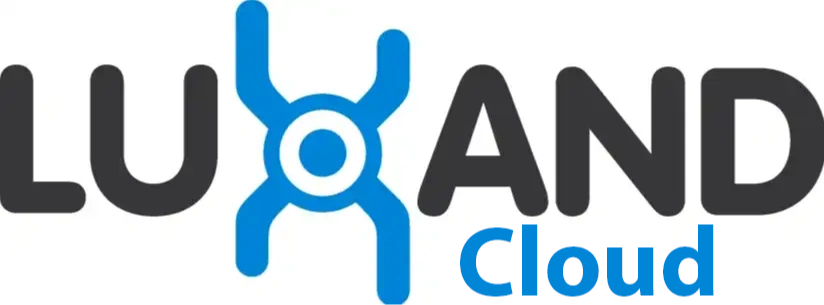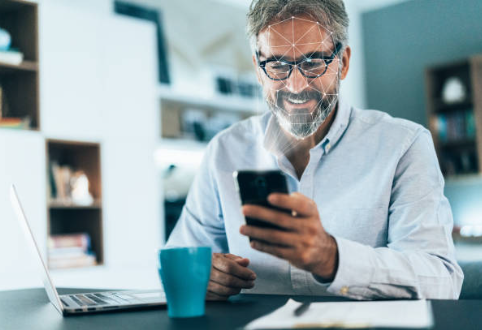
How to Protect Your Social Media Photos from Facial Recognition
Social media platforms have become an integral part of our lives, allowing us to share moments, connect with others, and express ourselves. However, as technology advances, so do the potential risks to our privacy. One of the emerging concerns is the use of facial recognition technology, which can identify and track individuals based on their photos. While this technology has its benefits, it also poses significant privacy risks, especially when it comes to our personal images shared online.
Protecting your social media photos from facial recognition is essential for maintaining your privacy and preventing unauthorized use of your images. In this blog post, we will explore practical strategies and tools you can use to safeguard your photos. From adjusting privacy settings on your social media accounts to employing techniques like blurring, cropping, and watermarking, we'll cover comprehensive steps to help you keep your digital presence secure. Whether you're a casual social media user or someone with a significant online following, these tips will empower you to take control of your privacy in an increasingly connected world.
Learn more about social media and facial recognition from our blog post - Facebook, Instagram, and TikTok are Spying on You. How to Protect Yourself?
Understanding Facial Recognition

This technology relies on complex algorithms and artificial intelligence (AI) to analyze facial features and match them with stored data.
The process begins with the face detection within an image or video frame. Once a face is detected, the system maps the facial features, including the distance between the eyes, the shape of the jawline, and the contours of the cheekbones. These unique characteristics form a facial signature, which is then compared against a database of known faces to find a match.
Facial recognition is widely used in security and law enforcement. For instance, airports employ it to verify the identities of travelers, enhancing security while speeding up the boarding process. Law enforcement agencies use the technology to identify suspects and missing persons, leveraging vast databases to cross-reference and confirm identities quickly.
Beyond security, facial recognition finds applications in everyday technology. Smartphones and laptops use it for user authentication, providing a seamless and secure way to access personal devices. Retailers implement facial recognition to personalize customer experiences, such as tailoring advertisements and streamlining the checkout process.
Despite its benefits, facial recognition technology raises significant privacy and ethical concerns. More information about risks associated with facial recognition we'll describe below.
Why Protecting Your Photos is Important
In an age where digital images are effortlessly captured and shared, the importance of protecting your photos cannot be overstated. Photographs, whether personal or professional, hold significant value and safeguarding them is essential for several reasons.
Firstly, personal photos often contain intimate moments and sensitive information that you wouldn't want to fall into the wrong hands. Images of family gatherings, vacations, and everyday life capture memories that are irreplaceable. If these photos are accessed by unauthorized individuals, it can lead to privacy breaches, identity theft, or misuse of your images.
Secondly, for professionals such as photographers, artists, and social media influencers, photos represent intellectual property and a primary source of income. Protecting these images from theft or unauthorized use is crucial to maintaining your professional integrity and financial well-being. When someone uses your photos without permission, it can result in lost revenue and damage to your reputation.
Moreover, in the digital landscape, cyber threats are ever-present. Hackers and malicious software can target your devices and online accounts, potentially leading to data loss or corruption. Regularly backing up your photos and using secure storage solutions can mitigate the risk of losing your valuable images to cyber attacks or technical failures.
Additionally, as social media platforms and online sharing become more prevalent, it's important to be mindful of the implications of sharing photos publicly. Photos shared without adequate privacy settings can be easily copied, altered, and distributed without your consent. This can lead to situations where your photos are used inappropriately or without context, which can be distressing and harmful.
To protect your photos effectively, consider implementing strong passwords and two-factor authentication for your online accounts. Use reputable cloud storage services that offer encryption and privacy controls. Regularly update your devices and software to guard against vulnerabilities. When sharing photos online, review and adjust your privacy settings to control who can view and share your images.
Protecting your photos is vital to preserving your privacy, safeguarding your intellectual property, and preventing potential misuse. By taking proactive measures to secure your images, you can ensure that your cherished memories and professional assets remain safe in the digital realm.
Risks Associated with Facial Recognition
Facial recognition technology, while offering numerous benefits, also carries significant risks that warrant careful consideration. Among the primary concerns are privacy invasion, identity theft, and unauthorized surveillance.
Privacy Invasion
One of the most significant risks associated with facial recognition is the potential for privacy invasion. The technology can identify and track individuals without their knowledge or consent, raising serious ethical and legal questions. This level of surveillance can erode personal privacy, as people may be monitored in public spaces, at work, or even during private moments. The widespread deployment of facial recognition systems by governments and corporations can lead to a society where individuals feel constantly watched, undermining the fundamental right to privacy.
Identity Theft
Another critical risk is the potential for identity theft. Facial recognition systems store biometric data, which, if compromised, can be used maliciously. Unlike passwords or credit card numbers, biometric data such as facial features cannot be changed if stolen. Hackers gaining access to facial recognition databases could use this information to impersonate individuals, gaining unauthorized access to secure areas, financial accounts, or personal data. This type of identity theft can have far-reaching and long-lasting consequences for the victims.
Unauthorized Surveillance
Unauthorized surveillance is a growing concern with the increasing use of facial recognition by law enforcement and other agencies. While these systems can help in identifying criminals or finding missing persons, they can also be misused for mass surveillance of the general public. This capability can be exploited to suppress dissent, monitor political activities, or target specific groups based on race, ethnicity, or religion. Such practices can lead to a climate of fear and mistrust, and can be particularly harmful in societies where democratic freedoms and human rights are already under threat.
Privacy Settings on Social Media Platforms
Adjusting Privacy Settings
Facebook provides a range of privacy settings that allow users to control who can see their posts, photos, and personal information. By navigating to the privacy settings menu, users can customize their audience for each post, choosing from options such as Public, Friends, Friends except..., Specific friends, and Only me. This flexibility ensures that users can share content with the intended audience while keeping it hidden from others.
One crucial setting is the "Who can see your future posts?" option, which lets users set a default audience for their future posts. Additionally, the "Review all your posts and things you're tagged in" feature allows users to manage tagged content before it appears on their profile, ensuring that no unwanted posts are visible without their approval.
Limiting Photo Visibility
Photos often carry more personal and sensitive information than text posts, making it important to control who can view them. Facebook allows users to create custom albums with specific privacy settings for each one. For example, users can make certain albums visible only to close friends or family members while keeping others private.
Setting Your Account to Private
One of the most effective ways to protect your privacy on Instagram is by setting your account to private. When your account is private, only your approved followers can see your posts, stories, and followers list. To set your account to private, go to your profile, tap the three horizontal lines in the top right corner, select "Settings," then "Privacy," and toggle the "Private Account" option. This change ensures that anyone who wants to follow you must send a request that you can approve or deny, giving you greater control over who can view your content.
Controlling Tagging and Mentions
Instagram allows users to tag others in posts and stories, which can sometimes lead to unwanted exposure or interactions. Fortunately, you can control who tags or mentions you on the platform.
To manage tagging, go to "Settings," then "Privacy," and select "Tags." Here, you can choose who can tag you—everyone, people you follow, or no one. Additionally, you can enable the option to manually approve tags before they appear on your profile by turning on "Manually Approve Tags." This feature ensures that you have the final say on which tagged photos and videos are visible to your followers.
Similarly, controlling mentions helps prevent unwanted attention. Under "Settings," then "Privacy," select "Mentions." You can choose to allow mentions from everyone, people you follow, or no one. This setting helps you manage who can mention your username in their posts and stories, reducing the risk of unwanted or inappropriate mentions.
Additional Privacy Tips
Besides setting your account to private and controlling tags and mentions, there are other ways to enhance your privacy on Instagram. Regularly review your follower list and remove any followers you don't recognize or trust. Be mindful of the information you share in your bio and posts, avoiding details that could compromise your privacy. Additionally, consider turning off activity status, which shows when you were last active on the platform, by going to "Settings," "Privacy," and then "Activity Status."

Protecting Your Tweets
One of the fundamental ways to enhance privacy on Twitter is by protecting your tweets. When you protect your tweets, only your followers can see your posts, and new followers must be approved by you. This setting ensures that your tweets are not publicly visible and helps you maintain control over who can engage with your content.
To protect your tweets, go to your profile, click on "Settings and privacy," then "Privacy and safety." Under the "Audience and tagging" section, check the box next to "Protect your Tweets." Once this setting is enabled, your tweets will be visible only to your followers, and your future tweets will require follower approval.
Managing Photo Tagging
Twitter also allows users to tag others in photos, which can sometimes lead to unwanted exposure. Managing who can tag you in photos is essential for maintaining your privacy.
To control photo tagging, navigate to "Settings and privacy," then "Privacy and safety," and under the "Audience and tagging" section, select "Photo tagging." Here, you can choose who can tag you in photos — everyone, only people you follow, or no one. By restricting photo tagging to trusted followers or disabling it entirely, you can prevent unwanted tags and ensure that you have control over which photos you are associated with on the platform.
Additional Privacy Tips
Beyond protecting your tweets and managing photo tagging, there are several other ways to safeguard your privacy on Twitter. Consider adjusting your location information settings to prevent your location from being attached to your tweets. Be cautious about sharing personal details in your bio and tweets, and regularly review your follower list to remove any accounts you don't recognize or trust.
Techniques to Protect Your Photos
Protecting your photos in the digital age involves using various techniques to ensure they are secure from unauthorized use and misuse. Here are some effective methods:
Using Blurring Tools
Blurring tools can be used to obscure sensitive parts of an image, such as faces, license plates, or other personal details. This technique is especially useful for sharing photos publicly without compromising privacy. By applying a blur to specific areas of your photo, you can protect identities and sensitive information while still sharing the essence of the image.
Adding Filters and Effects
Adding filters and effects not only enhances the aesthetic appeal of your photos but also serves as a protective measure. Unique filters and effects can make it more difficult for others to use your photos without your permission, as they alter the original appearance. Customizing your photos with distinctive styles can help you maintain a sense of ownership and discourage unauthorized use.
Cropping and Resizing
Cropping and resizing photos can also help protect your images. By adjusting the dimensions and composition of your photos, you can remove identifiable or sensitive elements before sharing them online. This technique allows you to focus on the most important parts of the image while safeguarding personal or proprietary information. Additionally, resizing images to lower resolutions can deter high-quality reproductions.
Watermarking Your Photos
Watermarking is one of the most effective ways to protect your photos. By adding a visible watermark, such as your name, logo, or a copyright symbol, you assert ownership and make it clear that the image is protected. Watermarks can be placed in a way that does not obstruct the main content but is still difficult to remove without damaging the image. This method not only deters unauthorized use but also helps in identifying your work if it is shared without permission.
Conclusion
Start by adjusting privacy settings on your social media accounts to control who can see your posts and photos. Opt for more restrictive settings to limit access to your images. Utilize tools such as blurring, cropping, and adding filters to obscure facial details and make your photos less recognizable. Consider watermarking your images to assert ownership and deter misuse. Regularly review and update your privacy settings, and be mindful of the information you share online.
By taking these proactive measures, you can enjoy the benefits of social media while maintaining greater control over your personal images. Protecting your photos from facial recognition technology is not just about preventing unauthorized use; it's about preserving your privacy and ensuring that your digital presence remains secure in an increasingly connected world.
